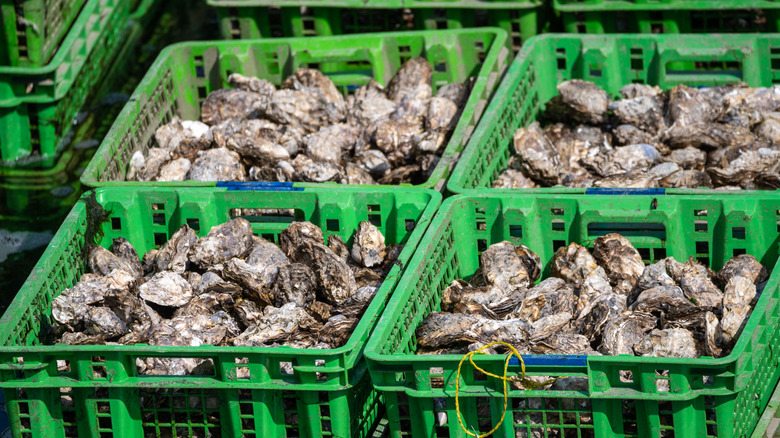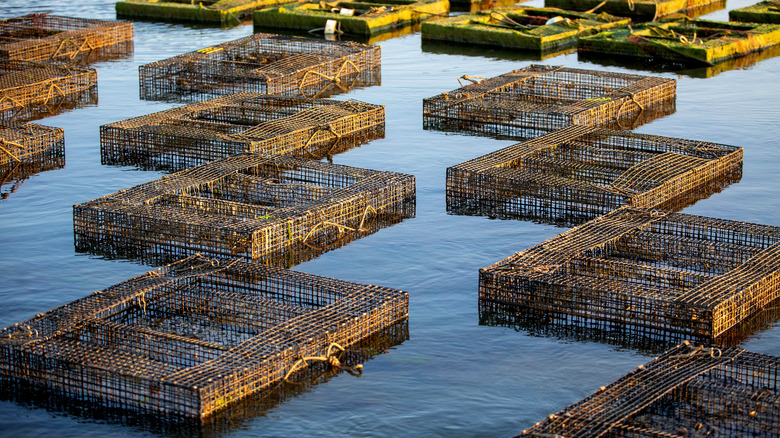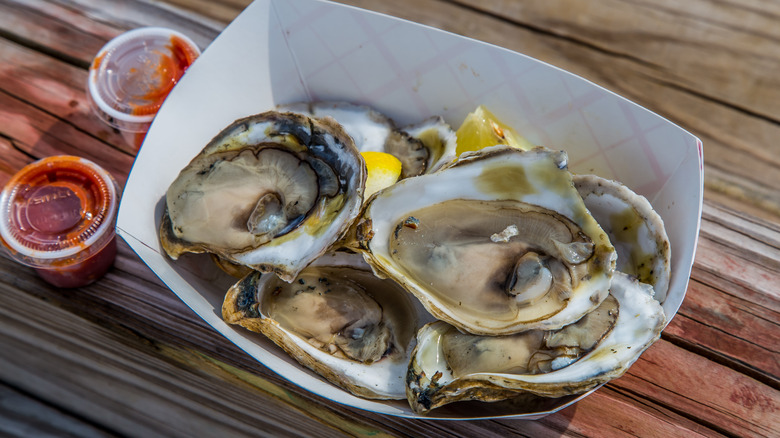Everything You Need To Know About Merroir
We know that the sea is salty, but it probably didn't occur to us that different oceans have varying salinity levels because seawater's saltiness is determined by a number of factors, including what kind of salts and minerals a specific river might add to the body it feeds into, how much water evaporates thanks to the presence of warm and dry winds, or even how much rain an area gets. As a result, most of the world's oceans have between 34 to 36 parts per thousand — or ppt — of salt, though some places may be more salty and others, less so (via Science Learning Hub).
Because of this, it should come as no surprise that oysters, many of which are found in estuaries where the sea meets the river (via Metropolitan College of New York) will take on the characteristics of the area they are found and raised in. And because Seattle Times writer Greg Atkinson discovered that the flavors the oysters took on reflected the area where they might have been grown or fished, he and oyster promoter Jon Rowley came up with the term "merroir" in 2003. Atkinson explained that the term was derived from "the French 'terroir,' which describes the way certain foods and wine grapes bear the detectable flavors of their home soil."
An oyster has similarities to good wine
And there is a reason for that. Oysters survive by taking in huge amounts of water through their bodies in an effort to capture their favorite foods (the microscopic plankton and algae) and pushing it out again in the same way a water filter would (via Metropolitan College of New York). So it is no surprise that the oyster is called "nature's water filtration system" (via One Earth). During the process of taking water in, the oyster is bound to capture the different essences contained in the water around it, which explains its unique flavor.
Small wonder then, that savoring an oyster is not too different from enjoying a bottle of wine, whose grapes are also influenced by external factors like weather, geology, and the condition of the soil the vines are grown in. Krystof Zizka, the owner and oyster buyer of Maison Premiere, told the New York Times, "The same kind of grape varietal can take on a completely different personality depending on where and how it's grown. It's the same with oysters."
Oysters are sensitive to their environment
If you ask an oyster fan how merroir might be experienced, he or she might tell you to look out for factors like what part of the country (or world) it might have come from, what kind of plankton and algae it might have enjoyed feasting on, and what kind of minerals might be found on the bed where it laid before it was harvested (via Elements Seafood). Others might even say the flavor of an oyster has something to do with the growing farms where oysters are raised.
Oysters are also sensitive to weather factors like rainfall and seasons, so as Elements Seafood points out, a few miles in location difference can have a real effect on how they taste. In fact, merroir can explain why there may only be five different types of oysters in North America, but it feels like there are more. On her blog "In a Half Shell," oyster expert Julie Qiu says bivalves harvested from the East Coast are seen to be more "earthy, mushroomy, and mulluscy," while Pacific oysters will remind you of cucumbers or other vegetables. Merroir could also explain why East Coast oysters are more solid and meaty, while West Coast oysters are more creamy and custard-like. Merroir also determines how large — or how small — your treat on a half shell will be.


